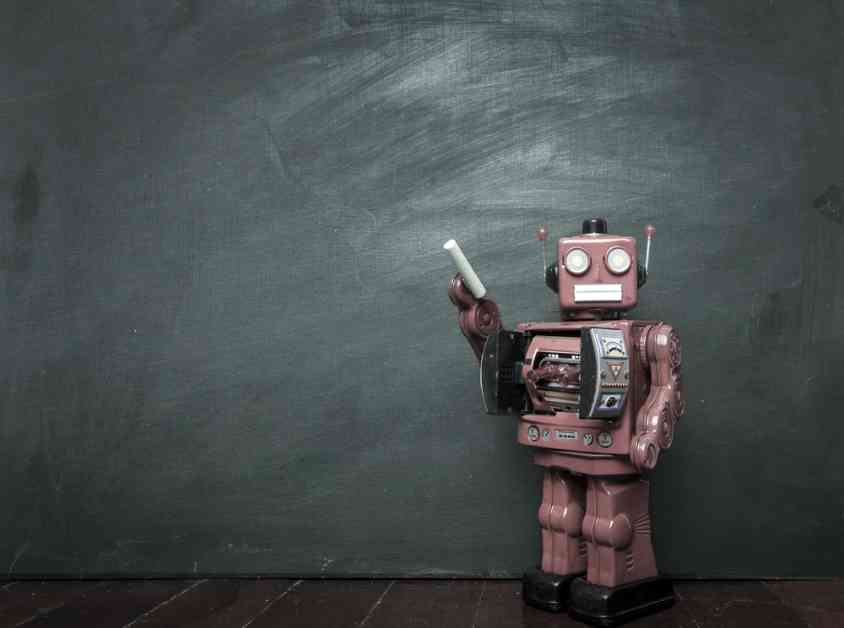In the ever-evolving digital age, the role of teachers is being redefined to meet the needs of students in a technologically advanced world. Contrary to the fears of some, teachers are not being replaced by machines, but rather technology is being used to amplify their impact and effectiveness in the classroom.
A recent chart from Bloomberg sheds light on the future of artificial intelligence and employment, revealing that the likelihood of automation for elementary and secondary teachers is practically zero. This is not surprising given that teachers are among the most educated yet least paid professionals. Despite these facts, the debate about machines replacing teachers continues to persist.
While some opinion pieces argue for the inevitability of teacher obsolescence, the Economist offers a more optimistic perspective. The potential of educational technology (edtech) will only be realized if teachers embrace it. Research consistently shows that teachers are the most important school-level factor affecting student outcomes. Their role extends beyond merely presenting information or grading assessments with discrete answers.
However, the reality is that teachers are often overwhelmed with a mountain of academic and non-academic tasks that leave them feeling unable to fully serve all their students. Technology has the potential to alleviate some of these burdens by automating tasks such as attendance, assessment grading, lesson planning, and student progress tracking. By offloading these tasks to platforms like MasteryConnect, Khan Academy, and Gooru, teachers can focus on providing mentorship, expert feedback, and engaging students in critical thinking.
One area where technology can significantly impact teaching is by reallocating teachers’ scarcest asset: time. With an increasing list of daily tasks, teachers find themselves staying late at school or taking work home. Technology can assist in streamlining these tasks, allowing educators to focus on aspects of teaching that have the greatest impact on students. Mentorship, guidance, expert feedback, and critical thinking engagement are essential components of effective teaching that cannot be replaced by machines.
Additionally, technology can help address students’ individual learning needs by providing personalized learning experiences. Traditional teaching methods often lead to one-size-fits-all lessons that fail to meet the diverse needs of students. Software can help teachers gather and analyze student learning data to tailor instruction to each student’s strengths and struggles. This personalized approach ensures that no student is left behind or bored, as learning experiences can be customized to meet their unique needs.
While technology can support high-quality teaching, there is still work to be done to ensure that it significantly amplifies the impact of great teachers. The integration of technology and teaching must be seamless to effectively serve students. The next five to ten years will be crucial in designing technology that complements teaching and supports student learning.
In conclusion, teachers play an indispensable role in providing high-quality education to students. They offer expert feedback, create engaging classroom cultures, provide social and emotional support, and coach students towards their academic and personal goals. While technology can assist teachers in meeting the demands of their profession, it is essential that the integration of technology and teaching is done thoughtfully and strategically to maximize its benefits. The future of education lies in the collaboration between teachers and technology to create a more engaging and effective learning experience for students.
